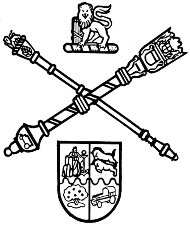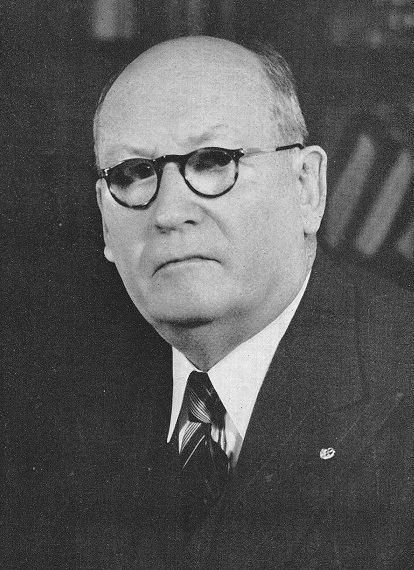|
Coloured Persons Communal Reserves Act, 1961
The Coloured Persons Communal Reserves Act of 1961, was an Apartheid South Africa piece of legislation, which was enacted to apply the Mission Stations and Communal Reserves Act 1909, of the Cape of Good Hope, to coloured persons settlement areas within the meaning of the Coloured Persons Settlement Areas (Cape) Act, 1930, to repeal the latter Act and to provide for matters incidental theret This Act further strengthened racial segregation legislation of South Africa during the Apartheid regime. Key Effect of Legislation The Coloured Persons Communal Rerserves Act, had the effect of lowering wages by denying Africans rights within urban areas and by keeping their families and dependants on subsistence plots in the reserve Repeal The act was repealed by the Abolition of Racially Based Land Measures Act, 1991 on 30 June 1991. See also * :Apartheid laws in South Africa * Apartheid in South Africa Apartheid (, especially South African English: , ; , "aparthood") ... [...More Info...] [...Related Items...] OR: [Wikipedia] [Google] [Baidu] |
Parliament Of South Africa
The Parliament of the Republic of South Africa is South Africa's legislature; under the present Constitution of South Africa, the bicameral Parliament comprises a National Assembly and a National Council of Provinces. The current twenty-seventh Parliament was first convened on 22 May 2019. From 1910 to 1994, members of Parliament were elected chiefly by the South African white minority. The first elections with universal suffrage were held in 1994. Both chambers held their meetings in the Houses of Parliament, Cape Town that were built 1875–1884. A fire broke out within the buildings in early January 2022, destroying the session room of the National Assembly. The National Assembly will temporarily meet at the Good Hope Chamber. History Before 1910 The predecessor of the Parliament of South Africa, before the 1910 Union of South Africa, was the bicameral Parliament of the Cape of Good Hope. This was composed of the House of Assembly (the lower house) and the Legislati ... [...More Info...] [...Related Items...] OR: [Wikipedia] [Google] [Baidu] |
Abolition Of Racially Based Land Measures Act, 1991
The Abolition of Racially Based Land Measures Act, 1991 (Act No. 108 of 1991) is an act of the Parliament of South Africa which repealed many of the apartheid laws that imposed race-based restrictions on land ownership and land use. Among the laws repealed were the Black Land Act, 1913 (formerly the Native Land Act), the Development Trust and Land Act, 1936 (formerly the Native Trust and Land Act) and the Group Areas Act, 1966. In his speech at the Opening of Parliament on 1 February 1990, State President F. W. de Klerk announced that the Land Acts and the Group Areas Act would be repealed. A white paper on the topic was tabled on 12 March. The bill was passed by Parliament on 5 June, signed by President de Klerk on 27 June, and came into force on 30 June. The reasons that the white minority government repealed what had been its key legislation were to respond to longstanding demands by activists, to build its legitimacy ahead of the negotiations for a transition to democracy ... [...More Info...] [...Related Items...] OR: [Wikipedia] [Google] [Baidu] |
Apartheid
Apartheid (, especially South African English: , ; , "aparthood") was a system of institutionalised racial segregation that existed in South Africa and South West Africa (now Namibia) from 1948 to the early 1990s. Apartheid was characterised by an authoritarian political culture based on ''baasskap'' (boss-hood or boss-ship), which ensured that South Africa was dominated politically, socially, and economically by the nation's minority white population. According to this system of social stratification, white citizens had the highest status, followed by Indians and Coloureds, then black Africans. The economic legacy and social effects of apartheid continue to the present day. Broadly speaking, apartheid was delineated into ''petty apartheid'', which entailed the segregation of public facilities and social events, and ''grand apartheid'', which dictated housing and employment opportunities by race. The first apartheid law was the Prohibition of Mixed Marriages ... [...More Info...] [...Related Items...] OR: [Wikipedia] [Google] [Baidu] |
Apartheid In South Africa
Apartheid (, especially South African English: , ; , "aparthood") was a system of institutionalised racial segregation that existed in South Africa and South West Africa (now Namibia) from 1948 to the early 1990s. Apartheid was characterised by an authoritarian political culture based on ''baasskap'' (boss-hood or boss-ship), which ensured that South Africa was dominated politically, socially, and economically by the nation's minority white population. According to this system of social stratification, white citizens had the highest status, followed by Indians and Coloureds, then black Africans. The economic legacy and social effects of apartheid continue to the present day. Broadly speaking, apartheid was delineated into ''petty apartheid'', which entailed the segregation of public facilities and social events, and ''grand apartheid'', which dictated housing and employment opportunities by race. The first apartheid law was the Prohibition of Mixed Marriages A ... [...More Info...] [...Related Items...] OR: [Wikipedia] [Google] [Baidu] |
Apartheid Laws In South Africa
Apartheid (, especially South African English: , ; , "aparthood") was a system of institutionalised racial segregation that existed in South Africa and South West Africa (now Namibia) from 1948 to the early 1990s. Apartheid was characterised by an authoritarian political culture based on ''baasskap'' (boss-hood or boss-ship), which ensured that South Africa was dominated politically, socially, and economically by the nation's minority white population. According to this system of social stratification, white citizens had the highest status, followed by Indians and Coloureds, then black Africans. The economic legacy and social effects of apartheid continue to the present day. Broadly speaking, apartheid was delineated into ''petty apartheid'', which entailed the segregation of public facilities and social events, and ''grand apartheid'', which dictated housing and employment opportunities by race. The first apartheid law was the Prohibition of Mixed Marriages A ... [...More Info...] [...Related Items...] OR: [Wikipedia] [Google] [Baidu] |



.jpg)